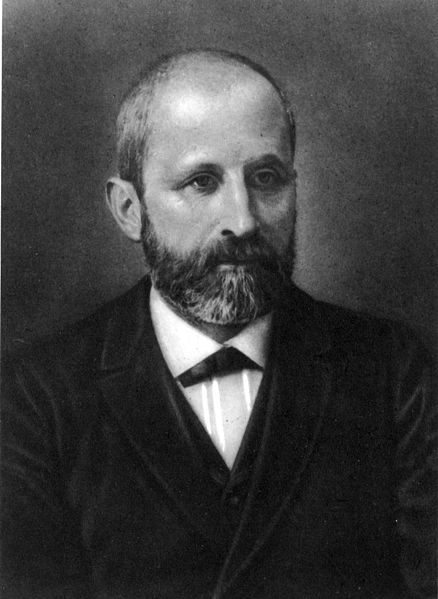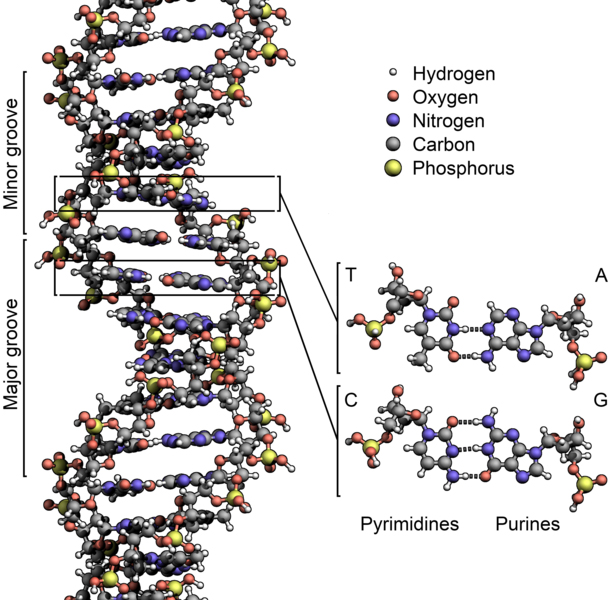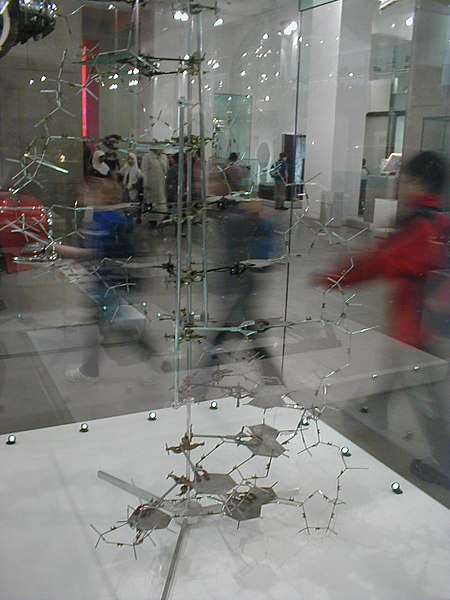Table of Contents (click to expand)
The structure of DNA was elucidated in 1953, but it was actually discovered in 1868 in a small laboratory in Germany by a Swiss scientist named Friedrich Miescher.
When I ask most people the simple question, “Who discovered DNA?”, I get one of two answers: “I don’t know” or “Watson and Crick”.
In most school level science textbooks, the names that pop up during the introduction to DNA are James Watson, Francis Crick and Maurice Wilkins. Their Nobel Prize—awarded in 1965—is italicized beside a classic picture of Watson and Crick admiring their double-helix model. The Prize was awarded “for their discoveries concerning the molecular structure of nucleic acids and its significance for information transfer in living material.” The words worth noting are molecular structure, not discovery. Who then discovered DNA?
Friedrich Miescher – The Discoverer Of DNA

Friedrich Miescher was born into a family immersed in science on August 13, 1844 in Switzerland. Both his father and uncle, Johann F. Miescher and Wilhelm His, respectively, were renowned physicians, anatomists and professors at the University of Basel. Miescher showed a keen interest in science and took up studying medicine in Basel, but later decided that research would satisfy his curiosity about the natural world.
Also Read: How Did Scientists Prove That DNA Is Our Genetic Material?
How Did Friedrich Miescher Discover DNA?
The story of DNA begins in 1868 when Friedrich Miescher joined Felix Hoppe-Seyler’s lab. Miescher was interested in the chemical composition of cells.
Hoppe-Seyler’s lab was where biology and chemistry shook hands. This environment provided Miescher with the right tools to go about investigating. Using pus from fresh surgical bandages sourced from a nearby clinic, Miescher obtained leucocytes, his cells of choice to work with.

Miescher was a meticulous scientist, recording every detail and working with great caution. This patient approach allowed Meischer to detect something odd amidst proteins and lipids. While performing tests, he noticed that a substance precipitated in acidic conditions. Excited and intrigued, he set out to explore this unusual precipitate.
He did several experiments to precipitate the substance out of solution. This unknown precipitate dissolved under alkaline conditions, but precipitated when the solution was neutralized. Even when the solution was made acidic, the substance did not dissolve back into solution.
Chemical Experiments Miescher Performed To Confirm DNA
Proteins carry both positive and negatively charged molecules in their structure. Depending on the pH of the solution, the entire protein may be positively or negatively charged. At a pH where a protein has a positive or negative charge, it will remain dissolved in solution.
The ions in the water will interact with the charged species on the protein keeping the protein in solution. However, at a particular pH (unique for every protein), the net charge on a protein is 0, meaning it has no charged. At this pH, the protein molecules begin to interact with each other instead of with the surrounding ions. This interaction causes the proteins to aggregate and they precipitate out. This pH is called the isoelectric point or pI. Changing the pH, away from its pI, it will dissolve back into the solution.
Miescher’s percipitate did not dissolve in a variety of acidic pHs. He came to the conclusion that this was not a protein.
To be sure, Miescher performed several more tests. He burned the precipitate and found all the usual organic elements – oxygen, carbon, hydrogen and nitrogen. What he didn’t find was sulphur, an element common in most proteins. He noted that the precipitate had an appreciable amount of phosphorus in it. Phosphorus wasn’t present in any other biomolecule.
He also subjected the precipitate to proteases, enzymes that break down proteins into their building blocks—amino acids. The proteases didn’t affect the precipitate, further cementing his view that this was not a protein. He also knew, based on previous work, that the substance was found in the nucleus, so he named it nuclein.
The paper highlighting Miescher’s discovery came in 1871. Miescher continued to work on nuclein, preferring to use salmon sperm as the material. His work showed the unusual phosphorus in nuclein is present as phosphoric acid. Noting that the molecule it diffused poorly, he deduced that it must be heavy (a.k.a high molecular weight). He guessed, correctly, that a basic molecule, which he called protamine is associated with nuclein.
Together, these substances constituted the mass of the sperm heads he was studying. Miescher, later research shows, was right about all of this!
Also Read: Does Human DNA Change With Time?
DNA After Miescher
In later years, Miescher altered his research focus. Gaining professorship, he began getting burdened by his other responsibilities. The mantle of studying DNA passed down to other scientists.
Many chemists, especially those who knew Miescher and Hoppe-Seyler, began working on nuclein. Albrecht Kossel, a researcher in Hoppe-Seyler’s lab (and a later Nobel Prize winner) found that nuclein was composed of four bases and sugars. Eduard Zacharias, a botanist, merged the concept of chromosomes with nuclein, demonstrating that nuclein was an important component of chromosomes.

Even so, DNA still received little attention from the scientific community at the time. Most experts, including Miescher, believed that proteins were the hereditary components, rather than nucleic acids (as they were later renamed by Richard Altmann). Many reasoned that nucleic acids were chemically too simple to yield such dynamic variety amongst life. Proteins, on the other hand, were composed of 20 different amino acids and were complex enough to provide the variation of life we see around us.
This caused nucleic acids to be neglected to a large degree. Work on the molecule faltered and the focus primarily shifted to proteins. All of this changed when a sequence of experiments—first by Griffith in 1928, then by Avery, MacLeod and McCarthy in 1944, and finally by Hershey and Chase in 1952—proved that DNA was the genetic material in cells.
However, the deal had still not been clinched! Without understanding the structure of DNA, it was difficult to say with certainty (or as much certainty as science allows) that DNA was irrefutably the life-giving molecule. Watson and Crick at Cambridge, Wilkins and Rosalind Franklin and her student Raymond Gosling, as well as Linus Pauling (of protein alpha helix fame) were all working to discover the structure of DNA. Through a combination of luck, ingenuity and inspiration, Watson and Crick reached the finish line first.

Since their discovery and the validation of DNA structure, the world of nucleic acids has never been the same. Work on the molecule skyrocketed and in the next 3 decades, an incredible amount of ground-breaking work had been done.
Upon Friedrich Miescher’s death at 51 from tuberculosis, his uncle Wilhelm His wrote in the introduction of Miescher’s collected works, “The appreciation of Miescher and his work will not diminish; on the contrary, it will grow and his discoveries and thoughts will be seeds for a fruitful future.” Today, we are still probing DNA and other nucleic acids for the secrets of evolution, health, and the beginning of life on Earth, so those words ring true, and Miescher will always hold a renowned place in the history of DNA!
How well do you understand the article above!

